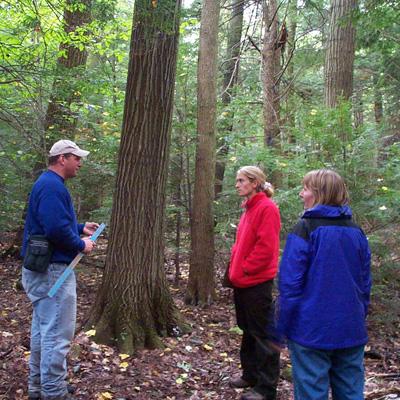Assessing and Enhancing Public Understanding of the Ecological Role of Forest Management in the Northern Forest

Historically, natural disturbances sustained mosaics of forest condition and age on the landscape, enhancing wildlife habitats and biological diversity. Recent forest maturation and reversion of agricultural land to mature forest have reversed these trends. Forest management is necessary to sustain forest and wildlife diversity, but many in the public neither understand nor support active forest management. Efforts to increase old forest on the landscape have also generated unwarranted public sentiment that young forest has little ecological value. These biases form major barriers against young-forest wildlife habitat restoration.
NSRC researchers conducted a random mail survey of 5000 residents of Maine, New Hampshire, Vermont, and New York to assess public attitudes toward early- and late-successional forests and management practices that sustain them. Rural and non-rural respondents alike had positive attitudes toward both early- and late-successional forest stages, though more were positive toward late stages than early stages. All were positive toward using timber management to sustain early-successional forest, with non-rural residents more positive than rural residents.
While most respondents knew the Northern Forest contains a diversity of successional stages, there is a common misperception that maturing forests have greater diversity than those containing early-successional stages. Respondents seemed unaware that early-successional habitat in the Northern Forest is disappearing. Educational efforts to improve public knowledge of forest management in the Northern Forest may be more successful if they emphasized that early-successional habitats are necessary to provide the services and products that people desire, such as aesthetic beauty and diverse wildlife values.
Download printable version [PDF]
Download full final report [PDF]
